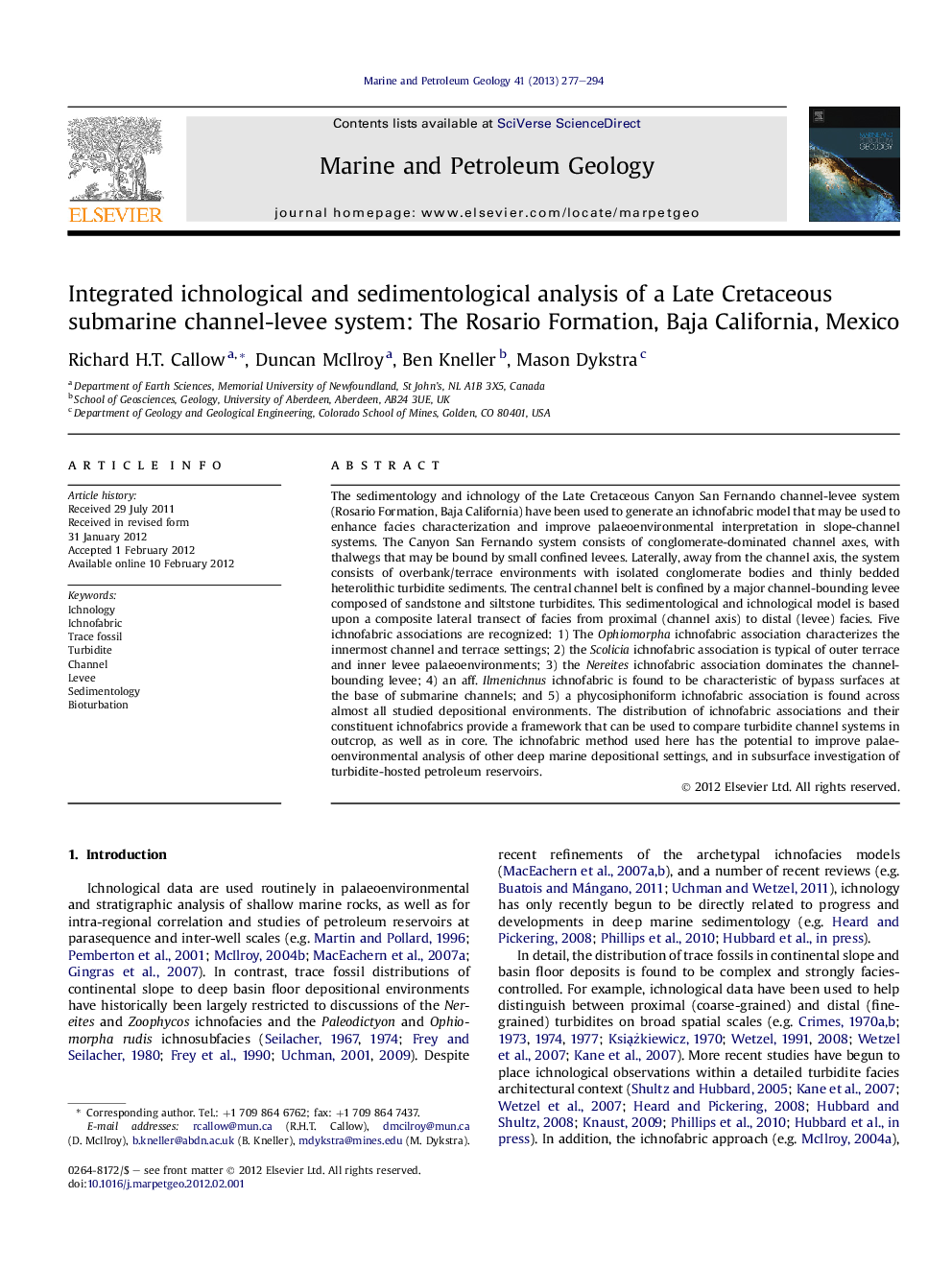| کد مقاله | کد نشریه | سال انتشار | مقاله انگلیسی | نسخه تمام متن |
|---|---|---|---|---|
| 4695782 | 1637183 | 2013 | 18 صفحه PDF | دانلود رایگان |

The sedimentology and ichnology of the Late Cretaceous Canyon San Fernando channel-levee system (Rosario Formation, Baja California) have been used to generate an ichnofabric model that may be used to enhance facies characterization and improve palaeoenvironmental interpretation in slope-channel systems. The Canyon San Fernando system consists of conglomerate-dominated channel axes, with thalwegs that may be bound by small confined levees. Laterally, away from the channel axis, the system consists of overbank/terrace environments with isolated conglomerate bodies and thinly bedded heterolithic turbidite sediments. The central channel belt is confined by a major channel-bounding levee composed of sandstone and siltstone turbidites. This sedimentological and ichnological model is based upon a composite lateral transect of facies from proximal (channel axis) to distal (levee) facies. Five ichnofabric associations are recognized: 1) The Ophiomorpha ichnofabric association characterizes the innermost channel and terrace settings; 2) the Scolicia ichnofabric association is typical of outer terrace and inner levee palaeoenvironments; 3) the Nereites ichnofabric association dominates the channel-bounding levee; 4) an aff. Ilmenichnus ichnofabric is found to be characteristic of bypass surfaces at the base of submarine channels; and 5) a phycosiphoniform ichnofabric association is found across almost all studied depositional environments. The distribution of ichnofabric associations and their constituent ichnofabrics provide a framework that can be used to compare turbidite channel systems in outcrop, as well as in core. The ichnofabric method used here has the potential to improve palaeoenvironmental analysis of other deep marine depositional settings, and in subsurface investigation of turbidite-hosted petroleum reservoirs.
► Trace fossils and ichnofabrics studied across a turbidite channel system.
► Ichnofabric distributions are controlled by depositional environment.
► Ichnofabric model can be used to improve palaeoenvironmental characterization.
► Model directly comparable with data from core.
Journal: Marine and Petroleum Geology - Volume 41, March 2013, Pages 277–294